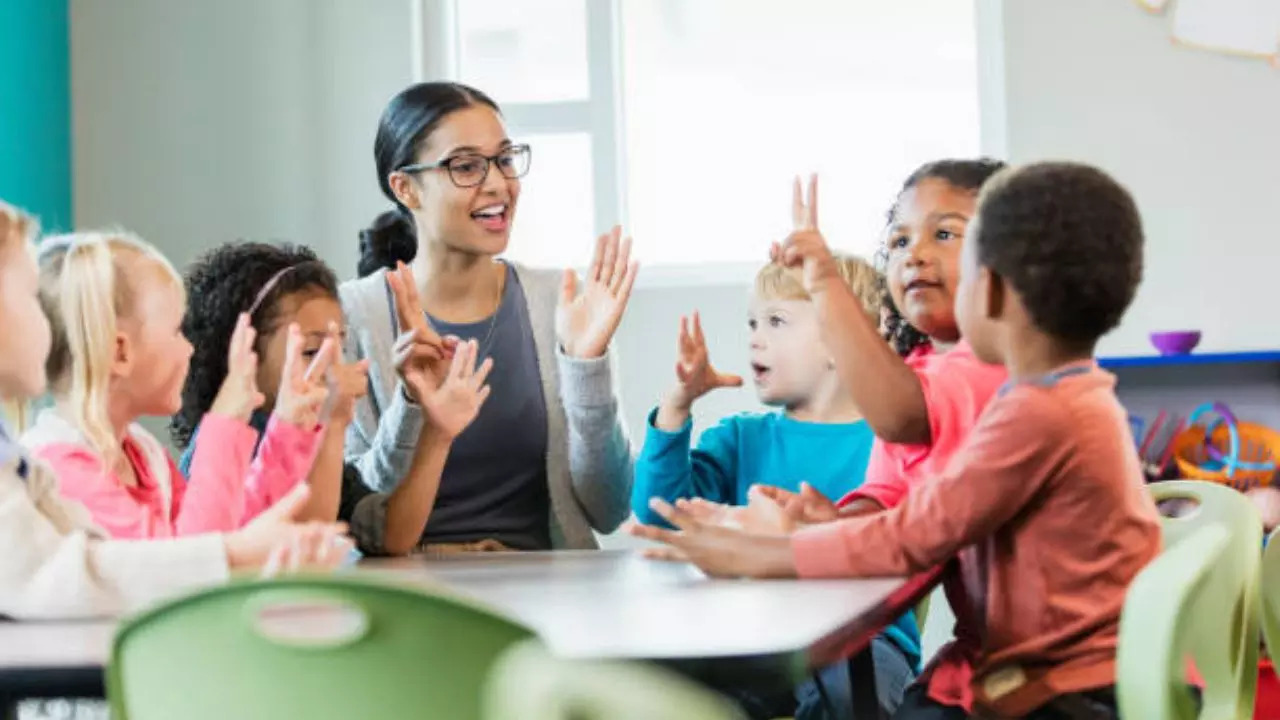Contents
US schools are moving breaks to meditation and yoga to help students’ mental health
Schools in the United States have introduced mindfulness, yoga and meditation classes to help children as young as six deal with mental health problems. The initiative was launched after the Centers for Disease Control and Prevention said many children are struggling following the COVID-19 pandemic and are affected by persistent feelings of sadness and hopelessness. Read on to know more.

The teacher guides them throughout the exercise, constantly reminding them to breathe.
Every day, junior school students in the US look forward to one of their favourite parts of the day. They close their eyes and move their thumbs from forehead to heart while a pre-recorded voice leads them through an exercise called Shark Fin – a part of the class’s regular meditation routine.
The teacher guides them throughout the exercise and constantly reminds them to breathe.
Children’s mental health struggles post-COVID-19
Schools across the country are now introducing yoga, meditation and mindfulness practices to help students manage stress and emotions. After the COVID-19 pandemic made clear the depth of their struggle with mental health, the US Centers for Disease Control and Prevention last year endorsed schools’ use of these practices. The CDC reported that in 2023, more than one-third of students were affected by persistent feelings of sadness and hopelessness. The agency recommended that schools use mindfulness practices to help students manage their emotions.
According to studies, school-based mindfulness programs are highly beneficial for young children — especially in low-income communities where students tend to face higher levels of stress or trauma.
The Cleveland Clinic says that various trials have shown that school-based mindfulness instruction improved psychological functioning for students and reduced the level of symptoms of post-traumatic stress disorder, or PTSD. In addition, regular meditation sessions lowered a child’s blood pressure and heart rate.
“We know that our teens and adolescents have had their mental health impacted a lot,” CDC Director Dr. Mandy Cohen told The Associated Press. “There are some real skills we can give our teens to make sure they’re dealing with some of the big emotions.”
How do schools practice mindfulness?
The Inner Explorer program guides students and teachers through five- to ten-minute sessions of breathing, meditation, and reflection several times a day. Teachers and administrators say they have noticed a difference in their students since they incorporated mindfulness into their daily routines.
According to teachers, many children have “calmed down” and “don’t get stressed anymore”.
What are the types of meditation for young children?
Experts say meditation for kids can take many forms, including movement such as yoga, swimming or walking. Movement-based “meditation” requires a lot more thought and attention because kids have to pay attention to what they’re doing. Team sports, however, don’t fall into that category because they can be a little too chaotic.
If you want to do something that requires less movement and more concentration, you could read a book together. Other forms of meditation include:
- Teaching the child to play an instrument or board game
- Going on a walking tour
- visiting a pet shop or zoo and talking about animal behaviour
- Ask your child to take deep breaths before bedtime to help them relax
- That quiet time when things start to get busy
Get the latest news on Times Now with breaking news and top headlines on mental health, wellness and more from around the world.


